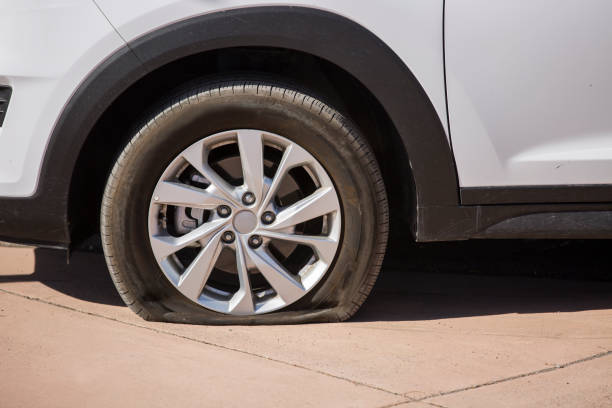A Comprehensive Guide to Run-Flat Tyres
Run flat tyres (RFT) have grown in popularity since their introduction in the middle of the 1980s. Increased customer interest in run flats, their benefits, and how utilising them affects driving is a result of certain automakers making them standard in new cars.
What Exactly Run Flat Tyres Are?
Run-flat tyres Coalville allow you to continue driving after a puncture, giving you time to find an auto shop or a level, safe place to change your tyre.
But you can’t keep driving on them. To learn how quickly and how far you can go on your run-flat tyres, consult the manufacturer’s instructions. Bridgestone run-flat tyres enable continuous operation even after a loss of some or all inflation pressure for up to 50 miles (80 km) at a top speed of up to 50 mph (80 km/h).
How Do Run Flat Tyres Perform?
The self-supporting system and the support ring system are the two main categories of run-flat tyre systems.
The majority of self-supporting run-flat tyre systems have reinforced sidewall structures in the tyre, which keeps the vehicle supported in the event of air loss. Following the loss of air pressure, this structure enables continuous operation up to the speed and distance authorised by the manufacturer.
On the other hand, support ring run-flat tyre solutions use a ring of firm rubber or similar structure that can sustain the weight of the vehicle in an airless environment.
No matter the type of system, only vehicles equipped with a Tire Pressure Monitoring System are usually permitted to utilise run-flat tyres since they continue to function even when they are “flat” (TPMS). The TPMS alerts you as soon as one of your tyres begins to lose pressure. Without it, you might not be aware when driving that your tyre pressure is low.
Can You Use Run Flat Tyres and Regular Tyres Together?
It’s also not a good idea to place normal tyres on a run-flat tyre vehicle.
Using regular tyres will make the car feel ‘bouncy,’ which will affect how it handles, because of how its suspension is being designed to support the extra weight.
In the event of a flat, you’re also not likely to have a spare (certain cars don’t have space for a spare), which could result in exorbitant towing or roadside assistance fees.
Another reason to avoid using normal tyres is the TPMS, as doing so may prevent the device from detecting a gradual puncture.
What Is the Life Span of Run Flat Tyres?
Run-flat tyres should last as long as regular tyres because they are primarily constructed from the same materials and have a tread pattern or design that is comparable. Nevertheless, a tire’s lifespan might vary based on factors including your driving style, the weather, the state of the roads, and how well you take care of your tyres.
Tyre replacement is always advised every six years, but if your tyres get damaged or have faded tread, you might need to do it sooner. Maintain the correct pressure and rotate your tyres once every six months or 10,000 kilometres to increase their longevity.
Run Flat Tyres Pros and Cons
In the event that your tyre gets punctured on the road, run-flat tyres can be of great assistance. But they might not be suitable for everyone.
Pros:
-
Enables you to continue driving while your tyre is flat: You do not need to pull over to the side of the road or venture outside in the weather to change a punctured tyre.
-
Better stability after a blowout: A run-flat tyre, unlike a standard tyre, may keep its form after a blowout and continue to support the weight of your automobile. In order to get to a neighbouring workshop, you can now steer and handle almost normally.
Cons:
-
Increased prices Run-flat tyres typically cost about 25% more than conventional tyres.
-
No spare tyre: In the event of a puncture, you can drive your car to a neighbouring shop to get the tyres replaced, but if you ever need a spare tyre, it could be a problem.
-
More abrasive ride: The stiffer sidewalls of these tyres result in a rougher ride. However, automakers adjust vehicles that come equipped with run-flat tyres to smooth out the ride.
-
Fewer options are available Run-flat tyres are less common than conventional tyres since they are not used as frequently. They frequently come in larger sizes as well. While you shouldn’t have any trouble getting the tyre you need in a city if you’re in a small town you might need to order them in advance.
-
Puncture diagnosis is challenging: With run-flat tyres, it might be challenging to determine when your tyres need air. Because of this, it’s crucial to regularly check your tyre pressure and to have a functional TPMS on board.
In the unlikely event that you have a flat tyre while driving, Run Flat Tyres Coalville is fantastic. That said, regardless of the sort of tyres your automobile has, keep them maintained correctly to ensure their longevity.




